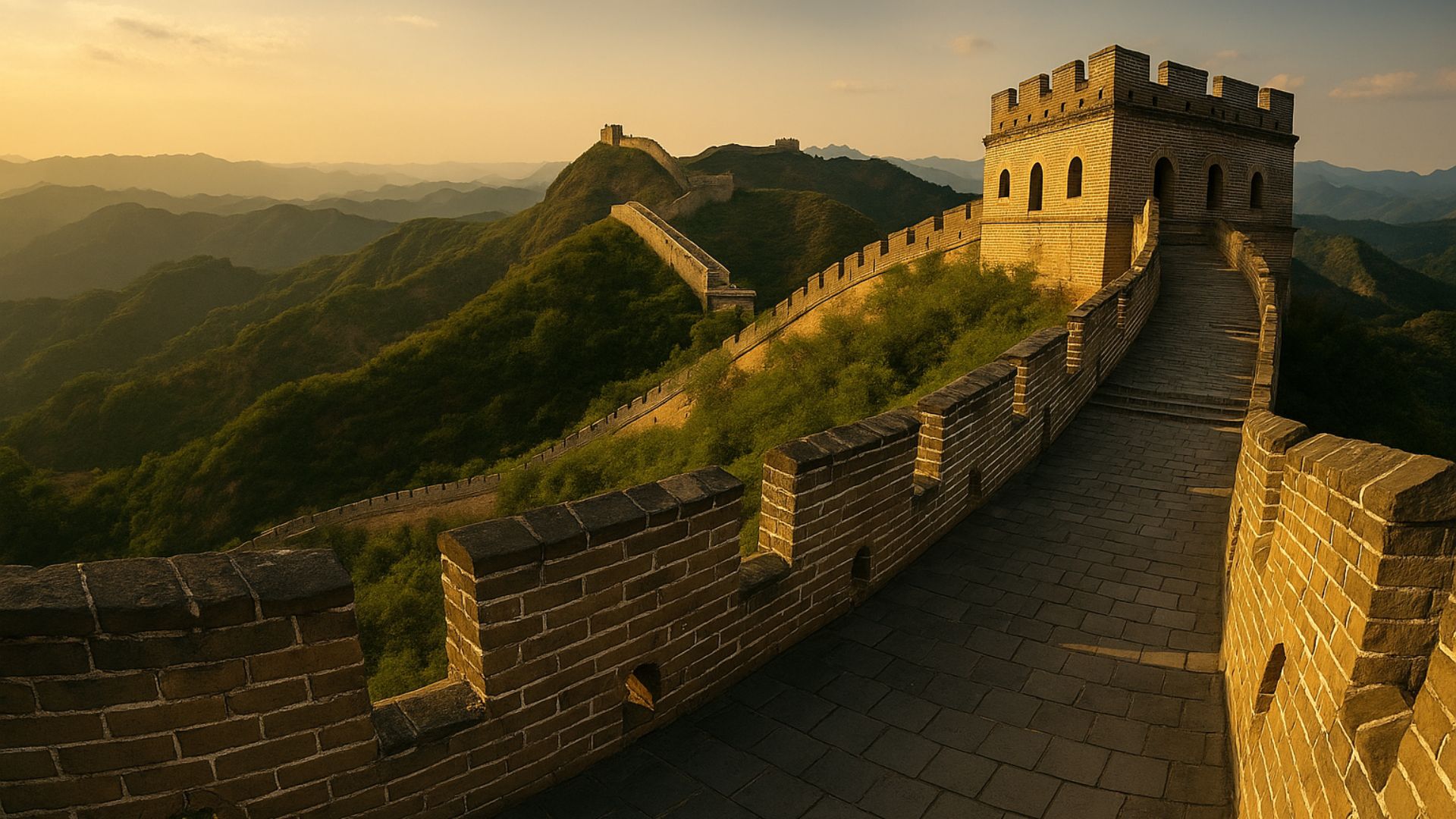The Great Wall of China: History, Facts & Unique Insights About the World’s Longest Fortification
The Great Wall of China (Chinese: 万里长城, Wànlǐ Chángchéng) is one of the most famous structures in the world. It is not a single continuous wall but a vast network of fortifications built over centuries along the northern borders of ancient China. Its primary purpose was defense against nomadic tribes and to control trade and immigration along the Silk Road.
Summary: The Great Wall of China
The Great Wall of China is the longest man-made structure in the world, stretching about 21,000 kilometers (13,000 miles). It was built over a very long time, more than 2,300 years, starting around 680 BC and continuing until 1681 AD. More than nine different Chinese dynasties worked on building and expanding it.
The earliest sections were built during the Warring States period between 475 and 221 BC. The Qin Dynasty made major constructions around 221 BC, completing important parts in about 20 years. Later, the Ming Dynasty, from 1368 to 1644 AD, made the largest expansions using stronger bricks and stones.
Building the Wall was very hard and costly, and it is estimated that over one million workers died because of tough working conditions, hunger, and forced labor. Some reports say at least 400,000 people lost their lives, and there are stories that some workers were even buried inside the Wall. The workers included soldiers, prisoners, and forced laborers who had to endure extreme hardships.
The Wall itself is not just one wall but a series of walls, trenches, and natural barriers built with materials like stone, earth, wood, bricks, and a special sticky rice mortar that made it very strong. Its height varies but often reaches about 2.75 meters (9 feet). Today, the Great Wall is recognized as a UNESCO World Heritage Site and one of the New Seven Wonders of the World.
Unique Facts About The Great Wall of China
Length and Scale: The total length of all wall sections, trenches, and natural barriers combined is approximately 21,196 kilometers (13,170 miles) — enough to circle the Earth halfway!
Construction Over Centuries: The earliest walls date back to the 7th century BC, with major unification and expansion by the Qin dynasty (221–206 BC). The most well-preserved parts were built by the Ming dynasty (1368–1644 AD).
Not Visible from the Moon: Contrary to popular myth, the Great Wall of China is not visible from the Moon with the naked eye. Even from low Earth orbit, it’s barely discernible under perfect conditions.
Materials Used: The wall was made using local materials — rammed earth, stone, wood, bricks, and tiles. Ming dynasty builders introduced bricks for stronger, more durable sections.
Sticky Rice Mortar: Ancient builders used a special mortar made from sticky rice soup and lime, which gave the wall incredible strength and durability.
Watchtowers and Communication: There were as many as 25,000 watchtowers built for surveillance and signaling using smoke by day and fire by night. This created an ancient communication network across vast distances.
Labor Force: Millions of soldiers, peasants, and prisoners worked on building the wall, with estimates of over one million deaths during construction.
Strategic Border: The Great Wall was more than a defense line. It functioned as a border control system, regulating trade and immigration along the Silk Road.
Multiple Names: Historically, it was known by many names like “Long Wall,” “Earth Dragon,” and “Purple Frontier.” The term “Great Wall” became common only during the Qing dynasty.
Section Variability: The wall’s construction varies greatly by region — from mud and earth in the western deserts to stone and brick in mountainous regions near Beijing.
Historical Highlights
Early Walls and Qin Dynasty
During the Spring and Autumn period (770–476 BC) and the Warring States period (475–221 BC), multiple Chinese states built walls to protect their borders. Emperor Qin Shi Huang unified these walls into a large defense system. However, most original Qin walls have eroded or disappeared.
Ming Dynasty Expansion
The Ming dynasty, after suffering defeats by Mongol forces, reinforced and extended the wall significantly. They used bricks and stones instead of rammed earth and constructed tens of thousands of watchtowers. This period gave us the iconic sections near Beijing, such as Badaling, Mutianyu, Jinshanling, and Simatai.
Qing Dynasty and Beyond
After the Qing dynasty expanded China’s borders, the wall lost its military importance. Maintenance declined, and some sections were destroyed or fell into ruin.
Must Read: The World’s Most Miserly Woman
Architectural and Engineering Marvels
The wall’s height ranges from 5 to 8 meters (16 to 26 feet), and the base width can be up to 6 meters (20 feet).
Some sections climb steep mountain ridges, demonstrating impressive ancient engineering.
Certain parts like Jiumenkou serve as a bridge over a valley, showing adaptation to landscape.
Sections near the Bohai Sea, like Old Dragon’s Head, end where the wall meets the ocean.
Cultural Significance
The Great Wall is a UNESCO World Heritage Site and one of the New Seven Wonders of the World (2007). It symbolizes Chinese strength, perseverance, and the desire for protection and unity.
Modern Tourism
The Badaling section is the most visited, attracting millions annually.
Efforts are ongoing to restore and conserve the wall, but many parts remain in disrepair due to erosion, vandalism, and construction damage.
A few sections have restrictions to prevent overcrowding, highlighting its cultural importance.
Conclusion
The Great Wall of China is much more than an ancient defense structure. It is a profound symbol of China’s history, culture, and architectural genius. Its vast length, complex history, and enduring legacy continue to inspire awe worldwide. Whether you visit or study it from afar, the Great Wall remains a timeless marvel reflecting human endurance and creativity.







